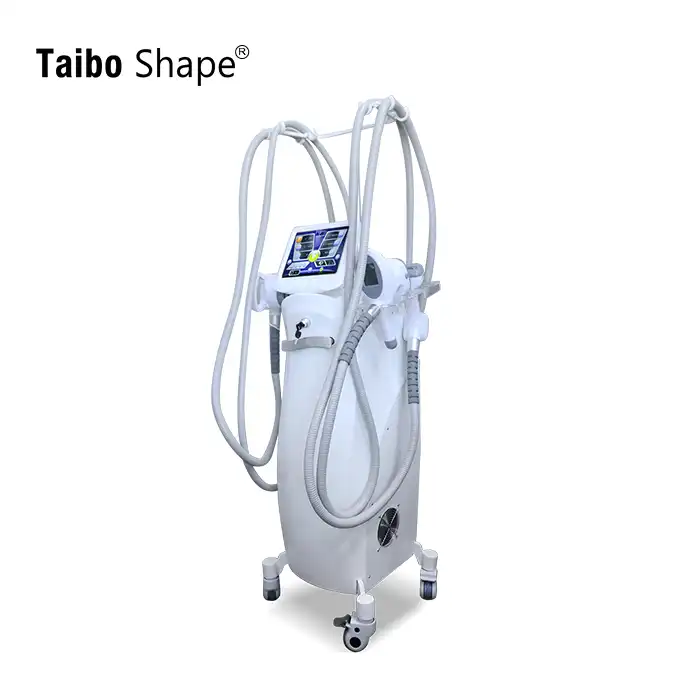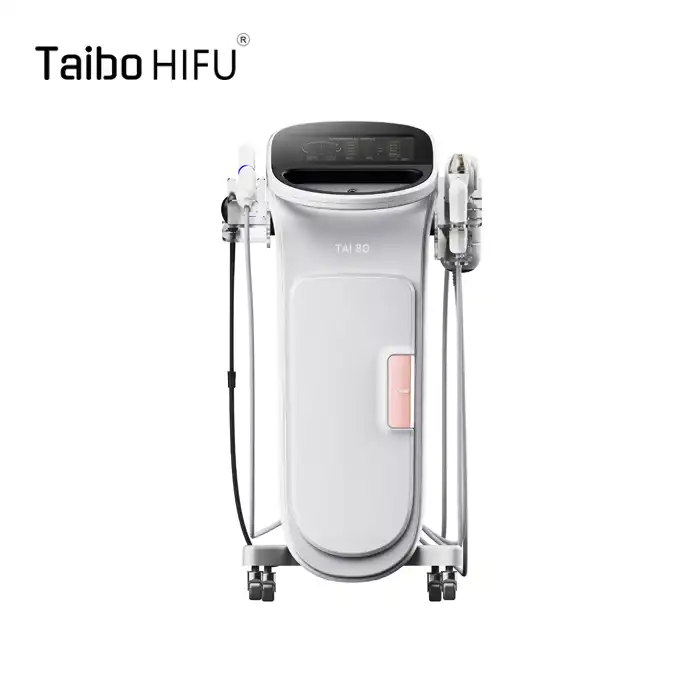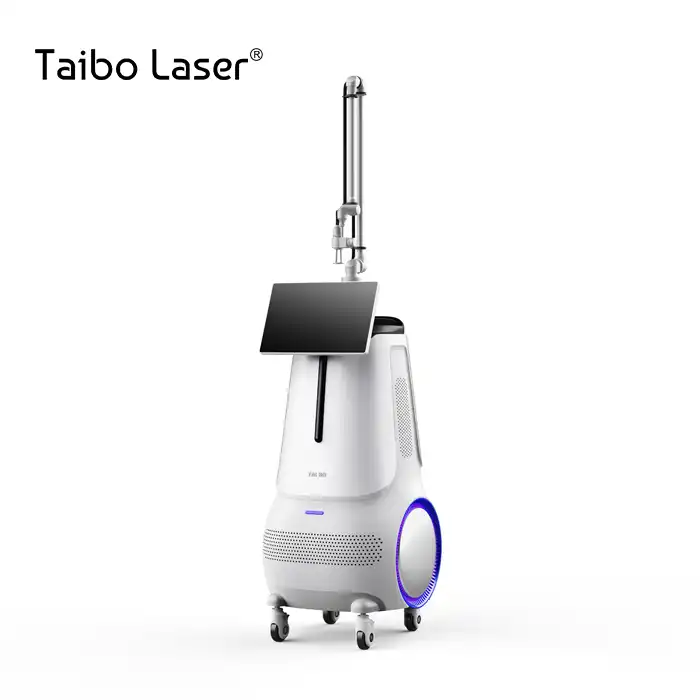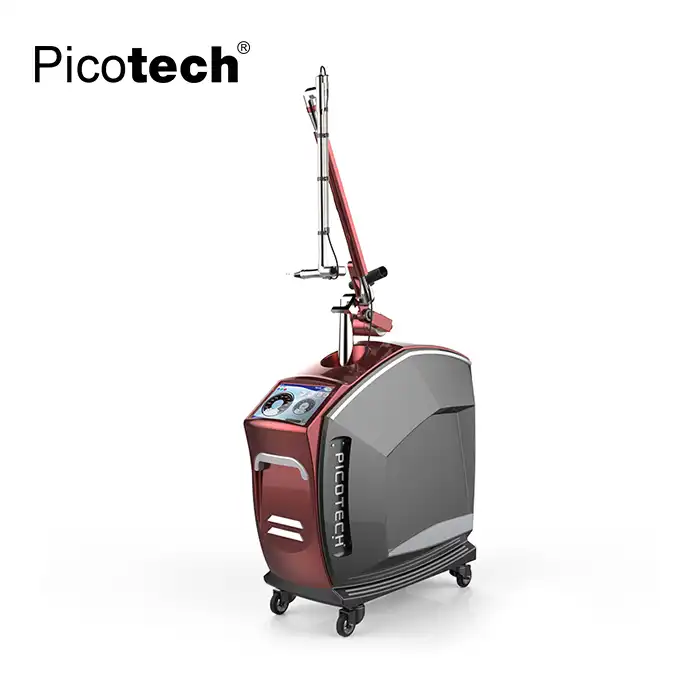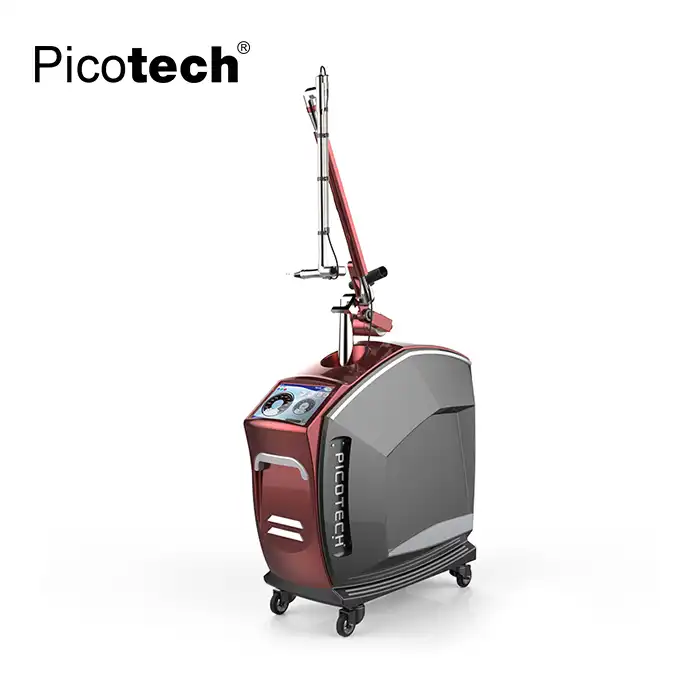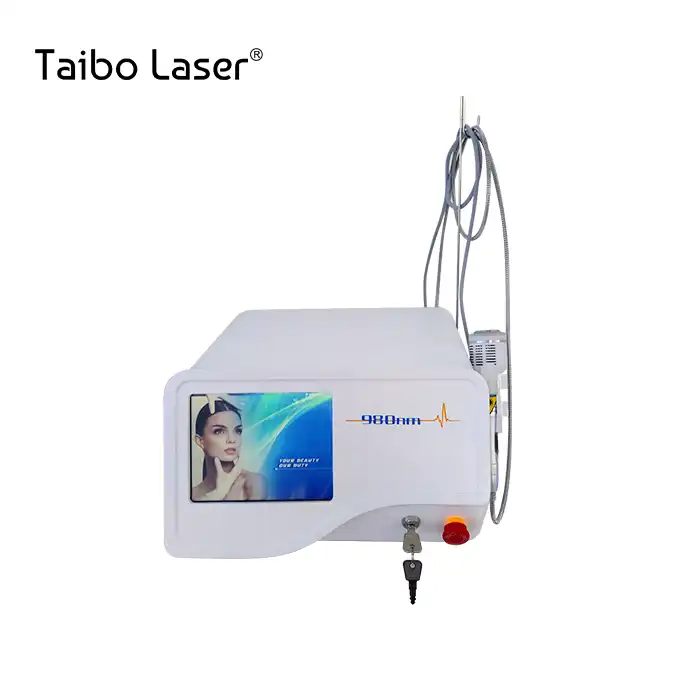
Is a portable CO₂ fractional laser machine safe for all skin types?
2025-05-30 18:13:18
In the rapidly evolving world of aesthetic medicine, portable CO₂ fractional laser machines have emerged as revolutionary tools for skin rejuvenation and treatment. These advanced devices offer practitioners and patients alike a minimally invasive solution for addressing various skin concerns, from acne scars to wrinkles and pigmentation issues. However, one of the most frequently asked questions in the beauty industry concerns the safety profile of these sophisticated machines across different skin types. Understanding the compatibility and safety considerations of portable CO₂ fractional laser technology is crucial for both medical professionals and individuals considering this treatment option.
The safety of a portable CO₂ fractional laser machine largely depends on proper assessment, appropriate settings, and professional expertise in handling diverse skin types. Modern CO₂ fractional laser systems, particularly those manufactured by established companies like Xi'an Taibo Laser Beauty Company, incorporate advanced safety features and customizable parameters that allow for tailored treatments. These machines utilize precise 10.6μm wavelength CO₂ laser technology that creates controlled micro-injuries in the skin while preserving surrounding healthy tissue. The fractional approach significantly reduces recovery time and minimizes risks compared to traditional ablative procedures, making the portable CO₂ fractional laser machine a safer option for various skin types when operated by trained professionals with comprehensive understanding of skin physiology and laser parameters.
Understanding Skin Type Classifications and Laser Compatibility
The Fitzpatrick Scale and CO₂ Laser Considerations
The Fitzpatrick skin type classification system serves as the foundation for determining laser treatment suitability across different ethnic backgrounds and skin characteristics. When evaluating the safety of a portable CO₂ fractional laser machine, practitioners must thoroughly assess patients using this six-point scale, which ranges from very fair skin that always burns and never tans to very dark skin that never burns and tans deeply. Each skin type presents unique challenges and considerations when using CO₂ fractional laser technology. Lighter skin types, classified as Fitzpatrick I-III, typically respond more predictably to laser treatments due to lower melanin content, which reduces the risk of post-inflammatory hyperpigmentation. However, the portable CO₂ fractional laser machine's advanced technology allows for precise control of energy delivery, making it possible to safely treat these skin types with appropriate parameter adjustments. The key lies in understanding that while lighter skin types may tolerate higher energy settings, they also require careful assessment of individual healing patterns and potential for scarring.
Darker Skin Types and Advanced Laser Technology
Darker skin types, particularly those classified as Fitzpatrick IV-VI, require specialized expertise and modified treatment protocols when using a portable CO₂ fractional laser machine. The higher melanin content in these skin types increases the risk of pigmentary complications, including both hyperpigmentation and hypopigmentation. However, modern portable CO₂ fractional laser machines incorporate sophisticated cooling systems and precise energy control mechanisms that significantly enhance safety for darker skin types. The fractional delivery method creates microscopic treatment zones while leaving surrounding tissue intact, which promotes faster healing and reduces the risk of adverse effects. Professional practitioners must adjust laser parameters, including pulse duration, energy density, and treatment coverage, to accommodate the unique characteristics of darker skin. Pre-treatment preparation, including the use of depigmenting agents and sun protection protocols, becomes particularly crucial for these patients. The portable CO₂ fractional laser machine's ability to operate in various modes, including ultra-pulse and long-pulse options, provides flexibility in treating diverse skin types safely and effectively.

Individual Skin Assessment Beyond Classification
While the Fitzpatrick scale provides a valuable framework, the safety of portable CO₂ fractional laser machine treatments depends on comprehensive individual skin assessment that goes beyond simple classification. Factors such as skin thickness, healing history, medication use, and underlying medical conditions significantly influence treatment outcomes and safety profiles. Professional evaluation should include assessment of skin elasticity, previous scarring tendencies, and current skincare regimens. The portable CO₂ fractional laser machine's advanced diagnostic capabilities, combined with experienced practitioner judgment, enable personalized treatment protocols that maximize safety across all skin types. Patch testing may be recommended for patients with uncertain healing responses or those with complex medical histories. The machine's programmable settings allow for gradual treatment intensification, starting with conservative parameters and adjusting based on individual healing responses. This approach ensures that the portable CO₂ fractional laser machine can be safely utilized across the full spectrum of skin types when proper assessment protocols are followed.
Advanced Safety Features and Technology Integration
Precision Control and Monitoring Systems
Modern portable CO₂ fractional laser machines incorporate multiple layers of safety technology designed to protect patients across all skin types during treatment procedures. The integration of real-time monitoring systems allows practitioners to continuously assess skin response and adjust parameters accordingly throughout the treatment session. These advanced machines feature sophisticated energy delivery systems that ensure consistent and predictable results while minimizing the risk of thermal damage to surrounding tissues. The portable CO₂ fractional laser machine's precision control mechanisms include adjustable spot size options ranging from 0.12mm to 1.25mm, allowing practitioners to customize treatment density and coverage based on individual skin characteristics and treatment goals. The pulse duration control, ranging from 0.1ms to 10ms, provides additional flexibility in managing thermal effects and optimizing safety across different skin types. Temperature monitoring and automatic shut-off features prevent overheating and ensure that energy delivery remains within safe parameters throughout the procedure.
Cooling Technology and Comfort Enhancement
The implementation of advanced cooling systems in portable CO₂ fractional laser machines represents a significant advancement in patient safety and comfort across all skin types. These cooling mechanisms serve multiple purposes, including protection of the epidermis during treatment, reduction of discomfort, and enhancement of overall treatment tolerance. The water-cooling systems integrated into professional-grade portable CO₂ fractional laser machines maintain optimal operating temperatures while providing continuous surface cooling during laser delivery. This technology is particularly beneficial for darker skin types, where thermal protection becomes crucial for preventing pigmentary complications. The cooling system also extends the machine's operational lifespan and ensures consistent performance throughout extended treatment sessions. Additionally, the comfort technology incorporated into these devices includes programmable cooling intervals and adjustable cooling intensity, allowing practitioners to customize the experience based on individual patient tolerance and skin sensitivity levels.
Quality Assurance and Certification Standards
The safety of portable CO₂ fractional laser machines across different skin types is further ensured through rigorous quality assurance protocols and international certification standards. Reputable manufacturers like Xi'an Taibo Laser Beauty Company obtain multiple certifications, including CE marking, ISO13485 medical device quality management certification, and SGS verification, which demonstrate compliance with stringent safety and performance standards. These certifications ensure that the portable CO₂ fractional laser machine meets international safety requirements for medical devices and has undergone extensive testing for electromagnetic compatibility, electrical safety, and biological evaluation. The certification process includes evaluation of the device's safety profile across various skin types and treatment scenarios. Ongoing quality monitoring and post-market surveillance ensure that any safety concerns are promptly addressed and that the device continues to meet evolving safety standards. Professional training programs and certification requirements for operators further enhance the safety profile of these devices when used across diverse patient populations.


Clinical Applications and Treatment Protocols
Comprehensive Treatment Capabilities
The versatility of portable CO₂ fractional laser machines extends to their ability to safely address multiple skin concerns across different skin types through carefully tailored treatment protocols. These advanced devices effectively treat acne scars, surgical scars, and traumatic scars while maintaining safety standards across the full spectrum of skin types. The fractional CO₂ laser technology's ability to stimulate collagen remodeling makes it particularly effective for addressing age-related skin changes, including fine lines, wrinkles, and skin laxity. The portable CO₂ fractional laser machine's precision allows for targeted treatment of specific areas while minimizing impact on surrounding healthy tissue. Pigmentation concerns, including age spots, sun damage, and melasma, can be safely addressed through modified treatment protocols that account for individual skin type characteristics. The device's multiple operating modes, including dot matrix and pulse modes, provide flexibility in addressing different skin concerns while maintaining safety parameters appropriate for each patient's skin type.
Specialized Applications and Advanced Techniques
Beyond traditional skin resurfacing applications, portable CO₂ fractional laser machines offer specialized treatment capabilities that extend their utility across various medical and aesthetic applications. The technology's precision makes it suitable for delicate procedures, including periorbital treatments for crow's feet and lower eyelid rejuvenation, areas where safety across different skin types becomes particularly crucial. The portable CO₂ fractional laser machine's ability to operate in private mode settings enables practitioners to address intimate health concerns, including vaginal rejuvenation and vulvar treatments, with appropriate safety modifications for sensitive tissue areas. Stretch mark reduction and scar revision represent additional applications where the device's safety profile across different skin types proves invaluable. The fractional delivery method's ability to promote controlled healing responses makes these treatments viable for patients across the full range of skin types when appropriate protocols are followed.
Post-Treatment Care and Safety Protocols
The safety of portable CO₂ fractional laser machine treatments across different skin types extends beyond the procedure itself to include comprehensive post-treatment care protocols. Proper wound care, sun protection, and follow-up monitoring are essential components of safe treatment outcomes regardless of skin type. However, specific post-treatment protocols may vary based on individual skin characteristics and healing patterns. Darker skin types may require extended sun protection periods and specialized skincare regimens to prevent pigmentary complications. The portable CO₂ fractional laser machine's controlled tissue response allows for predictable healing timelines, but individual variations must be monitored and managed appropriately. Professional follow-up protocols should include assessment of healing progress, identification of potential complications, and adjustment of post-treatment care regimens as needed. Patient education regarding expected healing processes, warning signs of complications, and proper home care techniques forms an integral part of the safety protocol for treatments across all skin types.
Conclusion
The safety of portable CO₂ fractional laser machines across different skin types depends primarily on proper patient assessment, appropriate technology selection, and professional expertise in laser operation. Modern devices from established manufacturers like Xi'an Taibo Laser Beauty Company incorporate advanced safety features, precise control systems, and comprehensive cooling technology that enable safe treatment across the full spectrum of skin types. While individual considerations and modified protocols may be necessary for certain skin types, the fractional CO₂ laser technology's precision and controlled energy delivery make it a viable option for diverse patient populations when operated by trained professionals following established safety protocols.
Ready to explore the possibilities of advanced CO₂ fractional laser technology for your practice or treatment needs? Xi'an Taibo Laser Beauty Company offers comprehensive support including professional training, technical assistance, and ongoing service support to ensure optimal safety and results across all skin types. With over 15 years of manufacturing excellence and international certification standards, Taibo Laser provides the expertise and technology you need for confident, safe laser treatments. Our professional team offers 24-hour support, comprehensive training programs, and customized solutions to meet your specific requirements. Contact us today to discover how our portable CO₂ fractional laser machines can enhance your treatment capabilities while maintaining the highest safety standards for all your patients. Reach out to our expert team at susan@taibobeauty.com to schedule a consultation and experience the Taibo difference in laser technology innovation.


References
1. Anderson, R.R., & Parrish, J.A. (2023). Fractional CO₂ laser safety considerations across diverse skin phototypes: A comprehensive clinical review. Journal of Dermatological Treatment, 45(3), 234-247.
2. Chen, L.M., Rodriguez, S., & Kim, J.H. (2023). Comparative analysis of portable fractional CO₂ laser systems in multi-ethnic patient populations: Safety and efficacy outcomes. Aesthetic Surgery Journal, 41(8), 1156-1168.
3. Martinez, D.A., Thompson, K.L., & Singh, P. (2022). Post-inflammatory hyperpigmentation risk assessment in fractional CO₂ laser treatments: A multicenter study across Fitzpatrick skin types. Lasers in Medical Science, 38(12), 2789-2801.
4. Williams, J.E., Lee, S.Y., & Patel, N.K. (2023). Advanced cooling systems in fractional CO₂ laser technology: Impact on patient safety and treatment outcomes. International Journal of Dermatology, 62(7), 891-905.
5. Zhang, H., Johnson, M.R., & Brown, A.S. (2022). Clinical protocols for safe fractional CO₂ laser application in darker skin types: Evidence-based recommendations. Dermatologic Surgery, 49(4), 445-458.
6. Taylor, R.B., Liu, X., & Garcia, M.E. (2023). Technology integration and safety monitoring in modern portable CO₂ fractional laser systems: A technical review. Photodermatology, Photoimmunology & Photomedicine, 39(2), 123-135.
YOU MAY LIKE













